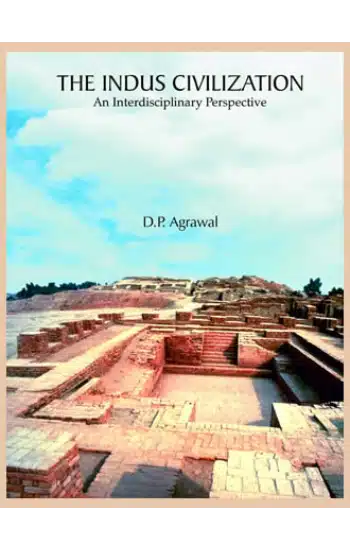
Save: 15%

Save: 15%
THE INDUS CIVILIZATION: An Interdisciplinary Perspective
Publisher:
| Author:
| Language:
| Format:
Publisher:
Author:
Language:
Format:
₹4,500 ₹3,825
Save: 15%
In stock
Ships within:
In stock
| Book Type |
|---|
ISBN:
Page Extent:
The Indus Civilization is as old as the ancient civilizations of Egypt, Mesopotamia and China. It spreads over an area of more than a million sq km, an area much bigger than the Mesopotamian and the Egyptian Civilizations which are famous for their sepulchral splendour. Though technologically innovative, the Indus Civilization is marked by a modesty and the functionality of its architecture and artefacts. After the classical reports of the excavators of the 30s and 40s of the last century, in recent years quite a few synthetic accounts of the Civilization have also come out. As the author of the present book has worked not only on archaeology but also on palaeoenvironment and archaeo-metallurgy, the book gives a holistic account with an interdisciplinary perspective. The data on climate, environment, metals, hydraulics, animals, plants and agriculture, have been given adequate coverage. The book discusses both the elite and folk traditions and the author suggests that the Rama legend carries the echo of the Indus Civilization. The author has covered the latest discoveries from the recent excavations, including most of the major and minor Harappan sites. The Indus Civilization in its mature phase flourished between 2600-1900 BCE, though its beginnings can be traced further back. The civilization is marked by a uniformity and standardiza-tion over its large territory but now the regional variations appear equally important. It shows considerable variation in town planning, yet a baffling uniformity in weights and measures as well as motifs. The book fully captures the uniformity in diversity of the Indus Civilization and covers its different dimensions. The Indus Civilization did not exhibit the macabre splendour of the Mesopotamian or the Egyptian graves but the book does capture its water splendour as described by Jansen?s German term wasserluxus. The author does not avoid technical data but presents it in an interesting style so that it retains the attention of the laymen.
The Indus Civilization is as old as the ancient civilizations of Egypt, Mesopotamia and China. It spreads over an area of more than a million sq km, an area much bigger than the Mesopotamian and the Egyptian Civilizations which are famous for their sepulchral splendour. Though technologically innovative, the Indus Civilization is marked by a modesty and the functionality of its architecture and artefacts. After the classical reports of the excavators of the 30s and 40s of the last century, in recent years quite a few synthetic accounts of the Civilization have also come out. As the author of the present book has worked not only on archaeology but also on palaeoenvironment and archaeo-metallurgy, the book gives a holistic account with an interdisciplinary perspective. The data on climate, environment, metals, hydraulics, animals, plants and agriculture, have been given adequate coverage. The book discusses both the elite and folk traditions and the author suggests that the Rama legend carries the echo of the Indus Civilization. The author has covered the latest discoveries from the recent excavations, including most of the major and minor Harappan sites. The Indus Civilization in its mature phase flourished between 2600-1900 BCE, though its beginnings can be traced further back. The civilization is marked by a uniformity and standardiza-tion over its large territory but now the regional variations appear equally important. It shows considerable variation in town planning, yet a baffling uniformity in weights and measures as well as motifs. The book fully captures the uniformity in diversity of the Indus Civilization and covers its different dimensions. The Indus Civilization did not exhibit the macabre splendour of the Mesopotamian or the Egyptian graves but the book does capture its water splendour as described by Jansen?s German term wasserluxus. The author does not avoid technical data but presents it in an interesting style so that it retains the attention of the laymen.
About Author
Reviews
There are no reviews yet.
Related products
HERITAGE OF RAJASTHAN: Monuments and Archaeological Sites
Save: 15%
DIALOGUE OF CIVILIZATIONS: William Jones and the Orientalists
Save: 15%
EIGHTEEN FIFTY SEVEN : Revolt and Contemporary Visuals
Save: 15%
NARRATIVE OF THE INDIAN REVOLT: From its Outbreak to the Capture of Lucknow
Save: 15%
RAJASTHAN : Prehistoric and Early Historic Foundations
Save: 15%
RELATED PRODUCTS
BEYOND POTS AND PANS: A Study on Chalcolithic Balathal
Save: 15%
Burhanpur: Unexplored History, Monuments And Society
Save: 15%
DIALOGUE OF CIVILIZATIONS: William Jones and the Orientalists
Save: 15%
Harappan Studies: Recent Researches In South Asian Archaeology (Vol. Ii)
Save: 15%
HERITAGE OF RAJASTHAN: Monuments and Archaeological Sites
Save: 15%
HINDU AND BUDDHIST MONUMENTS AND REMAINS IN SOUTHEAST ASIA
Save: 15%
RAJASTHAN : Prehistoric and Early Historic Foundations
Save: 15%
SILPA IN INDIAN TRADITION: Concept and Instrumentalities
Save: 15%
The Sacred Landscape Of Mundeshwari: The ‘Oldest Living’ Temple
Save: 15%
THE ARCHAEOLOGY OF MIDDLE GANGA PLAIN: Excavations at Agiabir
Save: 15%



Reviews
There are no reviews yet.